Hannah thinks she’s discovered why mountain biking is fun: it’s because it started that way.
“I didn’t realise you were trying to go fast.”
I wasn’t trying to go fast, but I wasn’t intending to be slow either. I was trying to go as fast as I dared without risking wipeout and injury. As it turned out, Repack felt like it risked wipeout and injury at every turn. Let off the brakes and the gradient grabs you, grab the brakes and the gravel surface leaves your tyres scrabbling for traction. Off-camber corners, blind bends, and rills do their best to throw you off the trail, where aggressive plants stretch out their spiky arms in welcome.
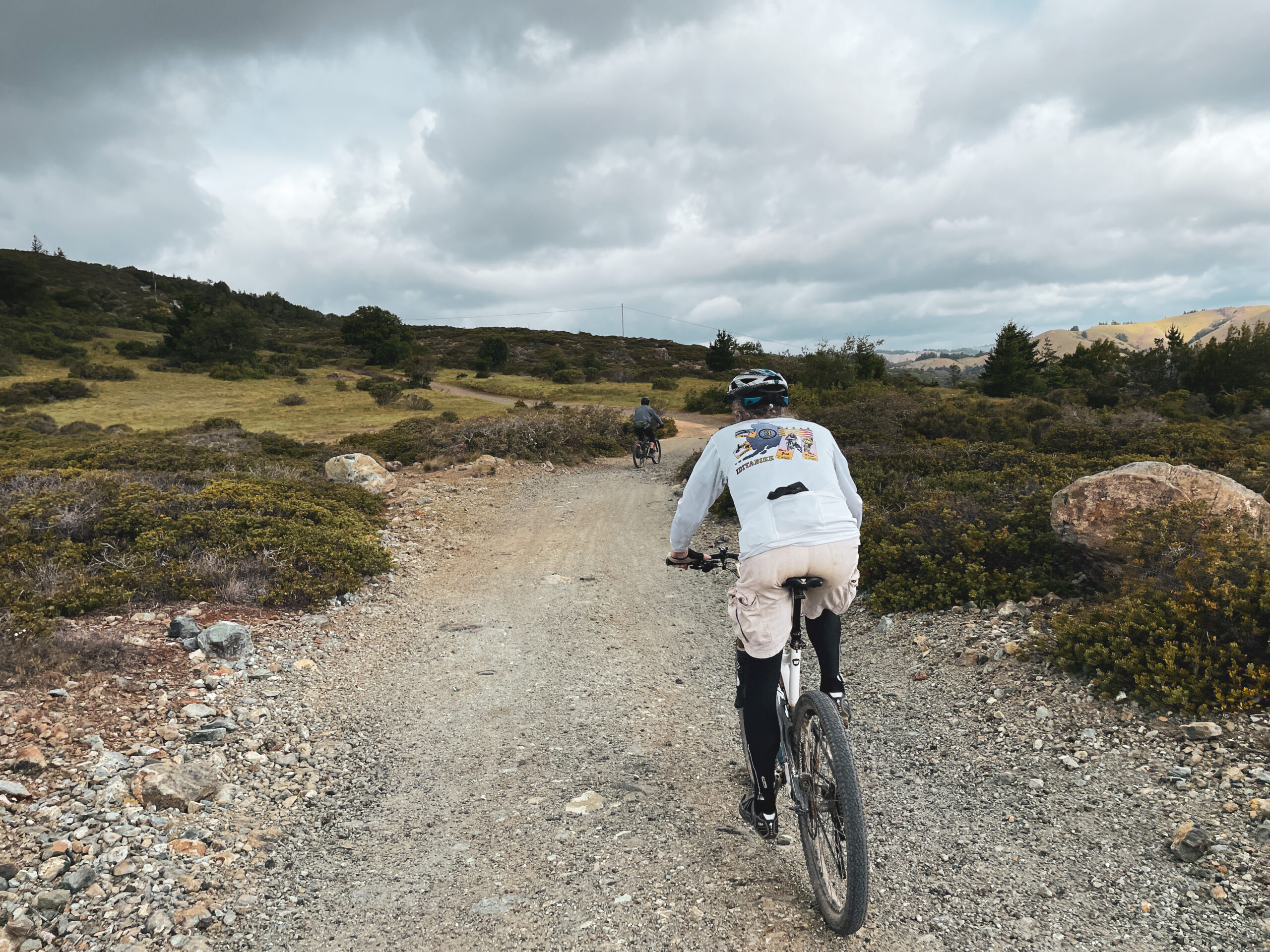
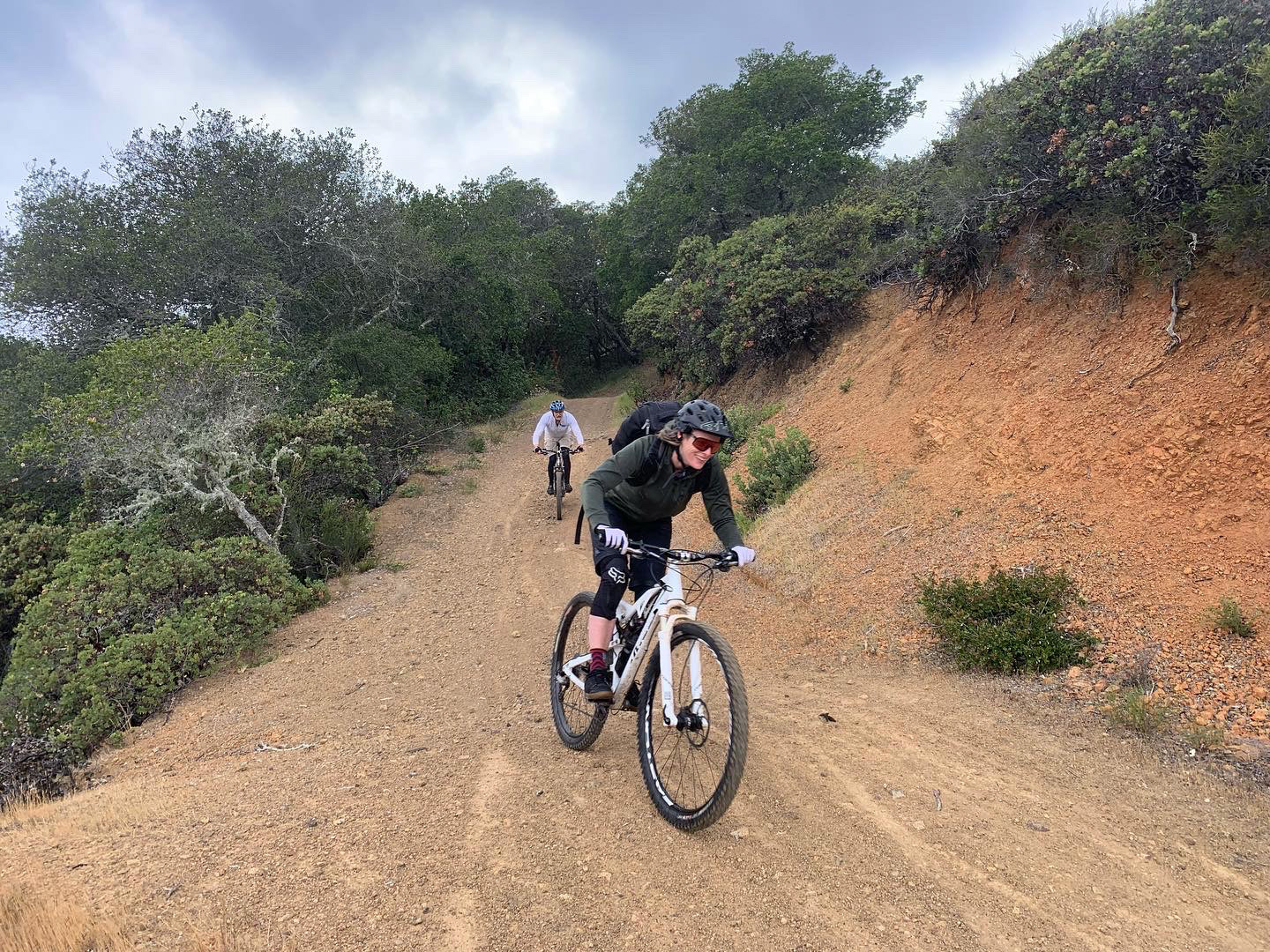
Round Two
In all fairness, my trail shadow is none other than Charlie Kelly, creator of the first-ever mountain bike magazine, and the first-ever downhill mountain bike race, here on this very trail. Consequently, he knows the Repack descent probably as well as anyone else in the world. But still, he is 35 years older than me and I am old enough to have had a midlife crisis. If I didn’t already enjoy his company, I might like him a little less.
Latest Singletrack Merch
Buying and wearing our sustainable merch is another great way to support Singletrack
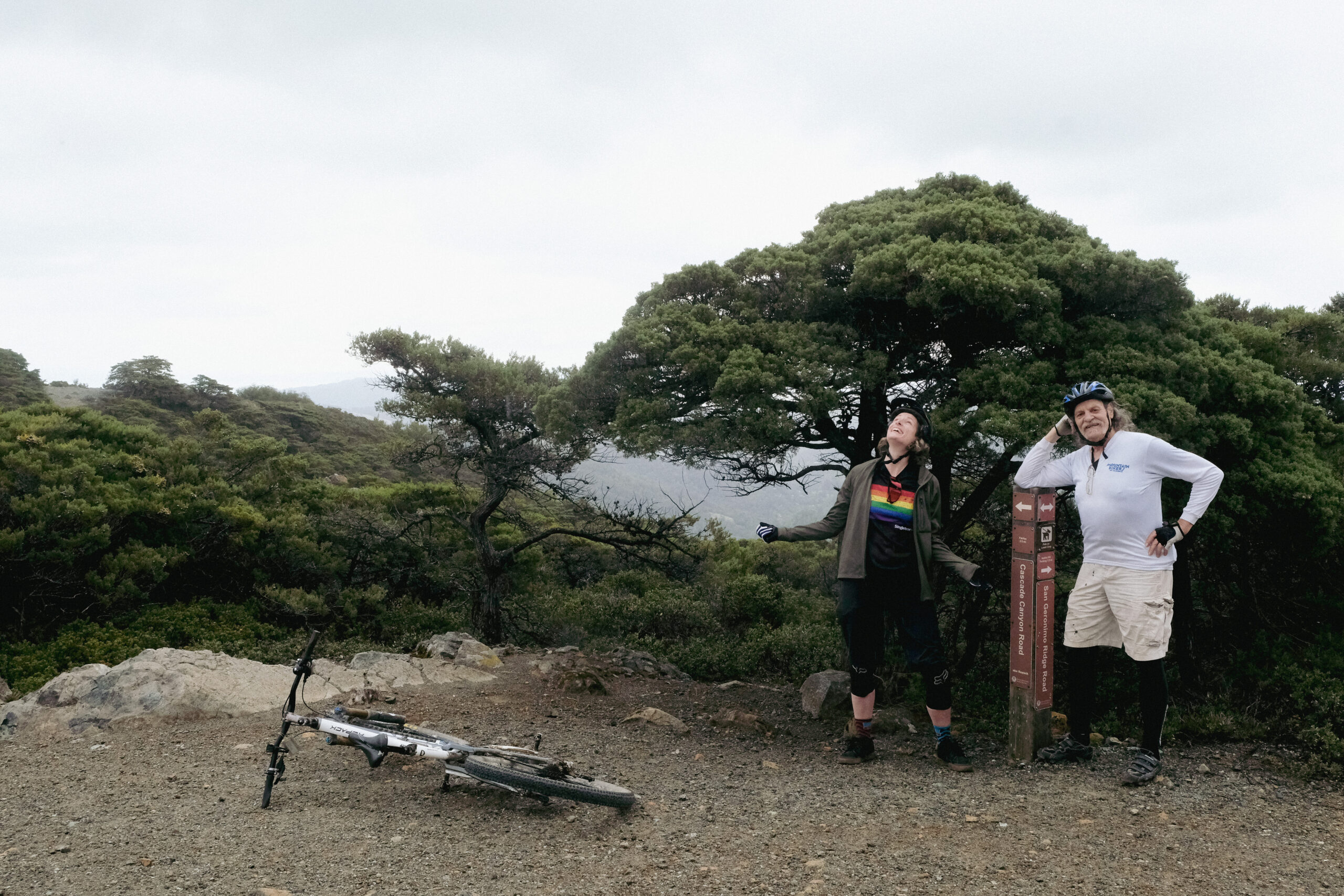
This ride down the birthplace of downhill racing is just the first activity in a day-long itinerary planned out by Charlie. It’s the return leg to our first meeting a couple of years before this trip. Then on a book tour of the UK, he stopped in the Calder Valley to spend a day riding bikes, telling stories, and drinking beer. I’m not sure how Charlie’s day ended, but mine culminated in clipping a railing, lying on the ground beside my bike, and looking at two moons. We discovered we have much in common, and the articles Charlie sought to publish in the first-ever mountain bike magazine, Fat Tire Flyer, were very much of the same ilk as those Singletrack looks to publish. For Charlie and me, the bikes are a means to an end – tools that help us discover great places and fun people. The tech…? For us it’s secondary.
That doesn’t mean we’re not interested, however. There are stories behind the tech too, relationships between the people who invented this or that development, tales of scraping together the cash to get new ideas off the ground. At the hub of my visit to Charlie’s home turf is the Marin Museum of Bicycling, which also houses the Mountain Bike Hall of Fame. It’s here that my partner Kevin and I meet Charlie before he loads us up into his truck for our lap of Repack. Our bikes join his Breezer Repack, a bike old enough that it has a front derailleur, in the back of a truck which is old enough to have windows you wind down by hand. He wears an Iditabike jersey from 1989. This doesn’t appear to be a particular fashion statement, or even an ‘I was there, man’ type status move. You get the impression with Charlie that his head isn’t turned by bells and whistles – he’ll use what he’s got, and he’s got what he’ll use. Plus he’s got a whole storage room full of things he’d like to find a use for, one day. But now I’m getting ahead of myself…
History is now
From the end of Repack, Charlie leads us on a bicycle tour of Fairfax and Marin – small, leafy towns just over the Golden Gate Bridge from the bustle of San Francisco. It’s all very pretty, and very cute, so this would make a fine tourist activity in its own right, but what you really need is Charlie as your guide. There’s a rather imposing building with palm trees in the gardens and a lost cat sign that makes me really hope they find the cat. Charlie says it’s here that the first meetings of their bicycle club were held – it seems rather grand for a bunch of hippies and dirtbags. There’s a totally anonymous building that was the site of Charlie and Gary Fisher’s first bike shop – surely it should at least have a blue plaque on the wall? There are various references to Star Wars – George Lucas is a local resident and benefactor of the town – and a house where the fences have been heavily adorned with skis and signs. Apparently the guy who lives there is the guy you want if something needs sorting or shifting. Someone’s parents lived here, Charlie’s friends lived there, plans were made in a garage here… It’s a tour of minor fame, of incidental incidents. Plotted on a map, they would make the kind of local history trail that you would only undertake in the company of particularly difficult relatives, the sort where you definitely want to stick to small talk and stay away from politics. But under Charlie’s running commentary they’re brought to life, an incredible concentration of creativity, co-operation and community. Stories that intertwine to form the roots of mountain biking as we know it today.
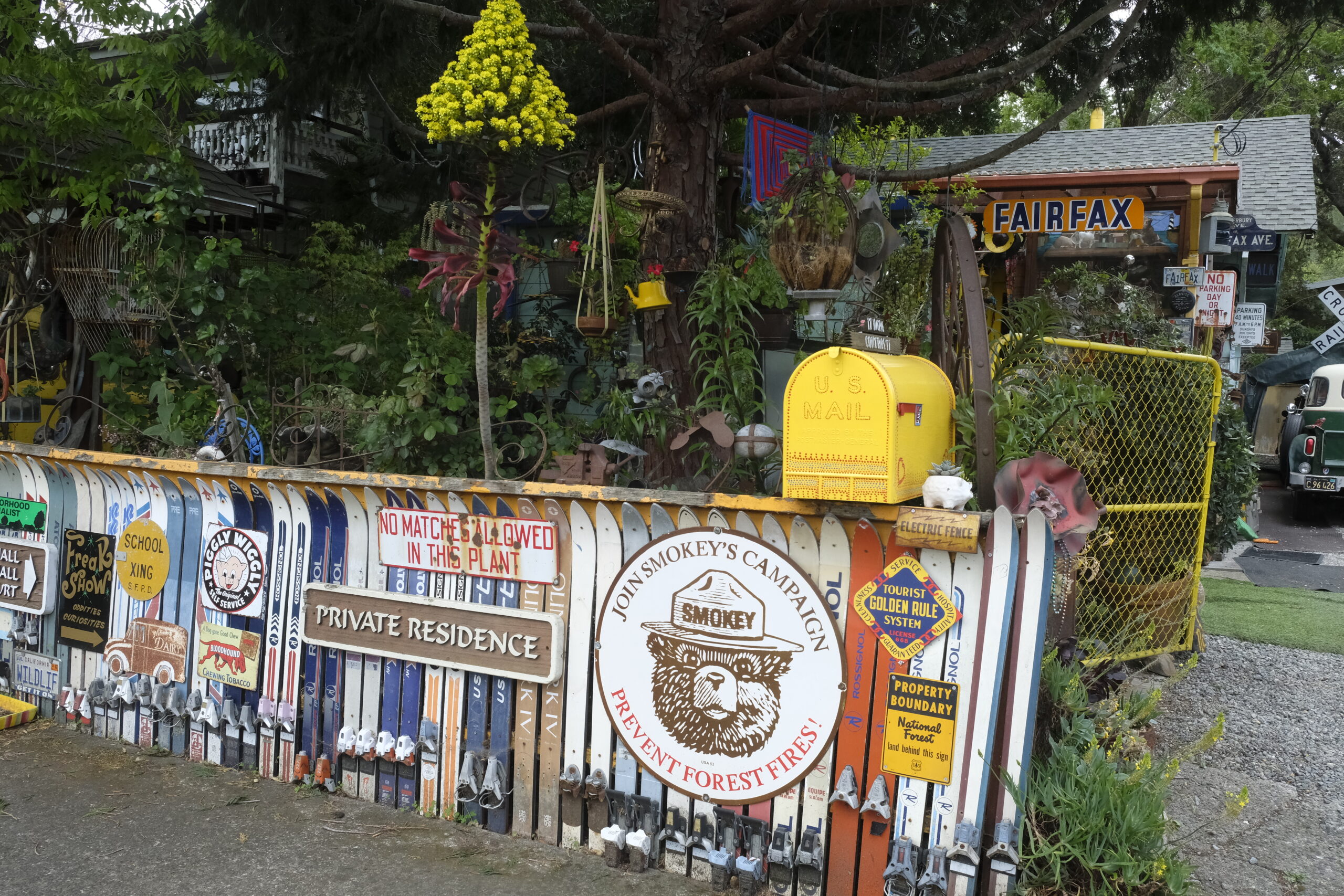
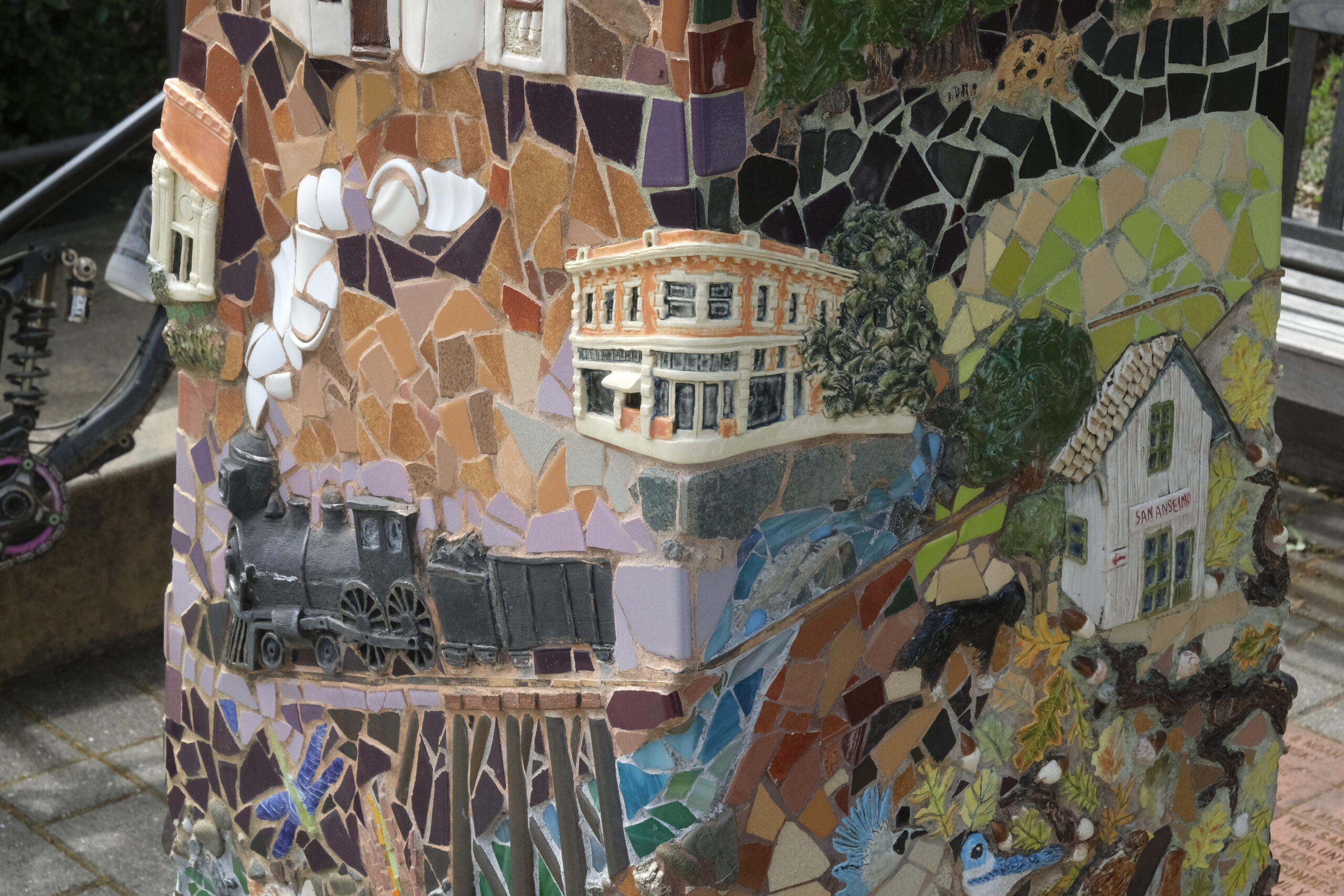
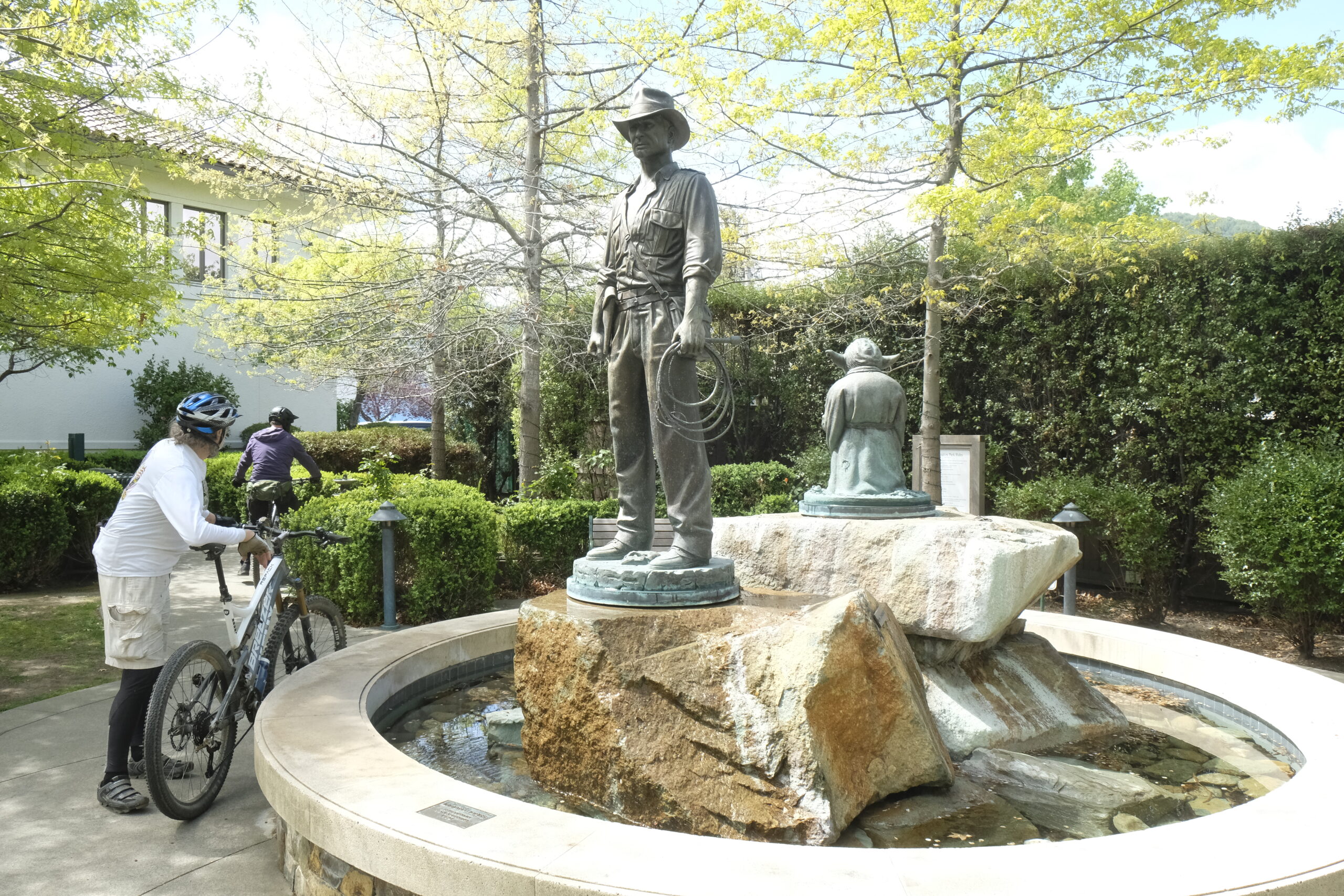
It’s not all history either, as the bike community lives on in this corner of Marin County. As we finish our ride and head to lunch, we see Otis Guy, framebuilder, mountain bike coach and the third-fastest rider ever down Repack, and a member of the Mountain Bike Hall of Fame. He’s heading off to work with the fire department. We’re served our lunch in a bike shop that’s also a bar – a winning combination – by his son, Sterling Guy. He spots Kevin’s BTR cap, and a conversation about British hand-built steel bikes swiftly follows. If you’re a bike nerd, this is surely the place to live.
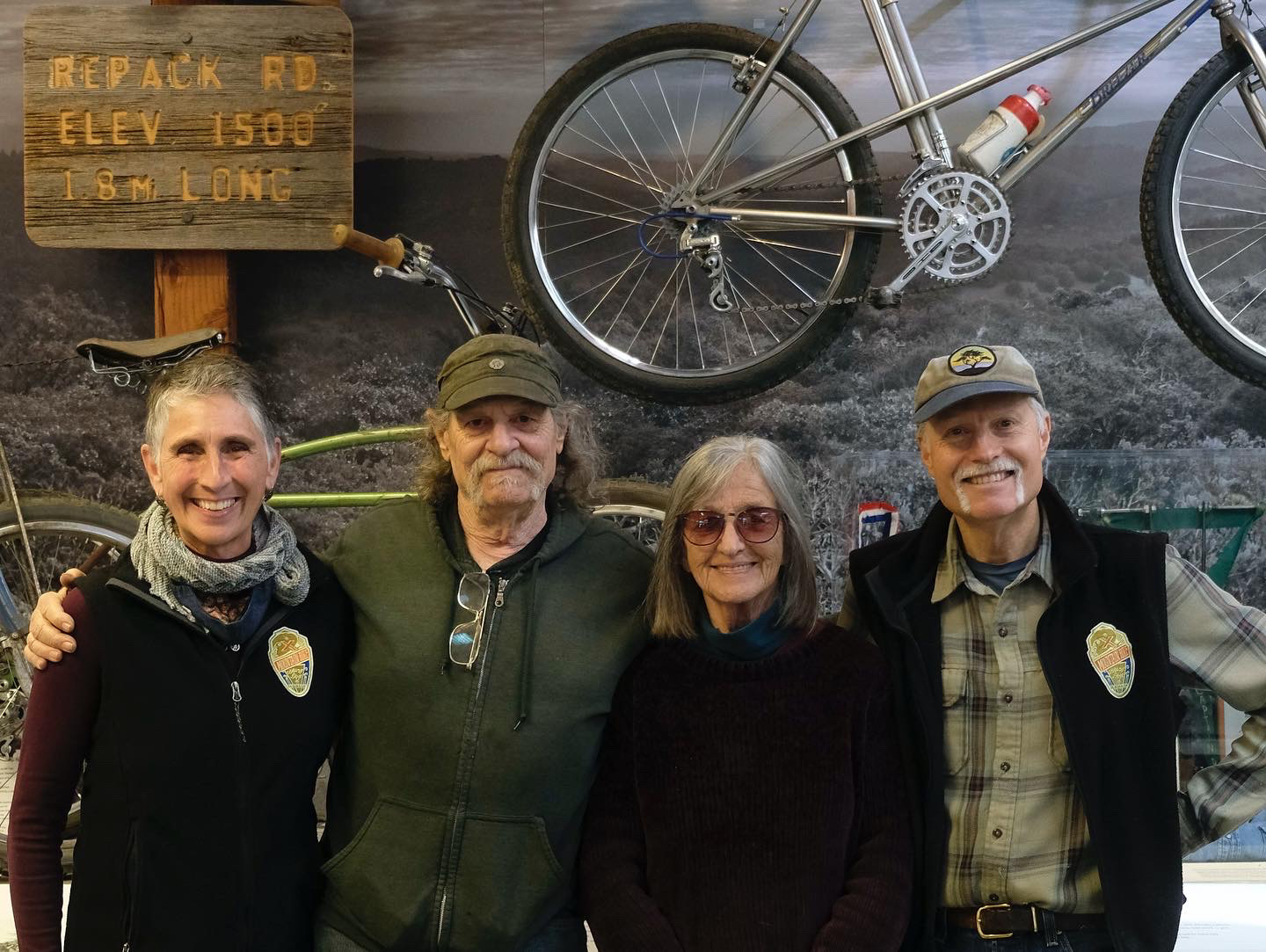
Not content with giving us a private tour of the museum, Charlie has rustled up a host of board members to show us around, and they’ve turned up with home-baked cookies and chocolate brownies. We feel like royalty, except that our footmen and lady’s maids are actual royalty. We’re not sure whether to bow or curtsy, so we play it safe and eat extra brownies. Cecile Ojeda Bodington shows me some of the collection that references the bicycle’s role in women’s emancipation. Wende Cragg, another Hall of Fame member, is there to show us the many photos that she took of those early days of Repack – if you’ve got a mental image of a Repack race, it’s probably based on a picture she took. Connie Thorpe Breeze apologises for having to dash off, leaving Connie’s husband, Joe, in deep dive bike nerd territory with Kevin. Yes, that Joe Breeze, the one who co-owned the company ‘Mountain Bikes’ with Charlie Kelly and Gary Fisher – the company that invented the term ‘mountain bikes’. Joe doesn’t just like mountain bikes, he likes all bikes, and as the curator of the museum he knows all about each bike on display in incredible detail. I have seen Kevin in bicycle museums before, but with the breadth and depth of Joe’s knowledge their conversation goes waaaay down the wormhole. Charlie and I leave them to it, and he gives me the more human side to the stories behind the bikes – stories about the people who made or rode them.
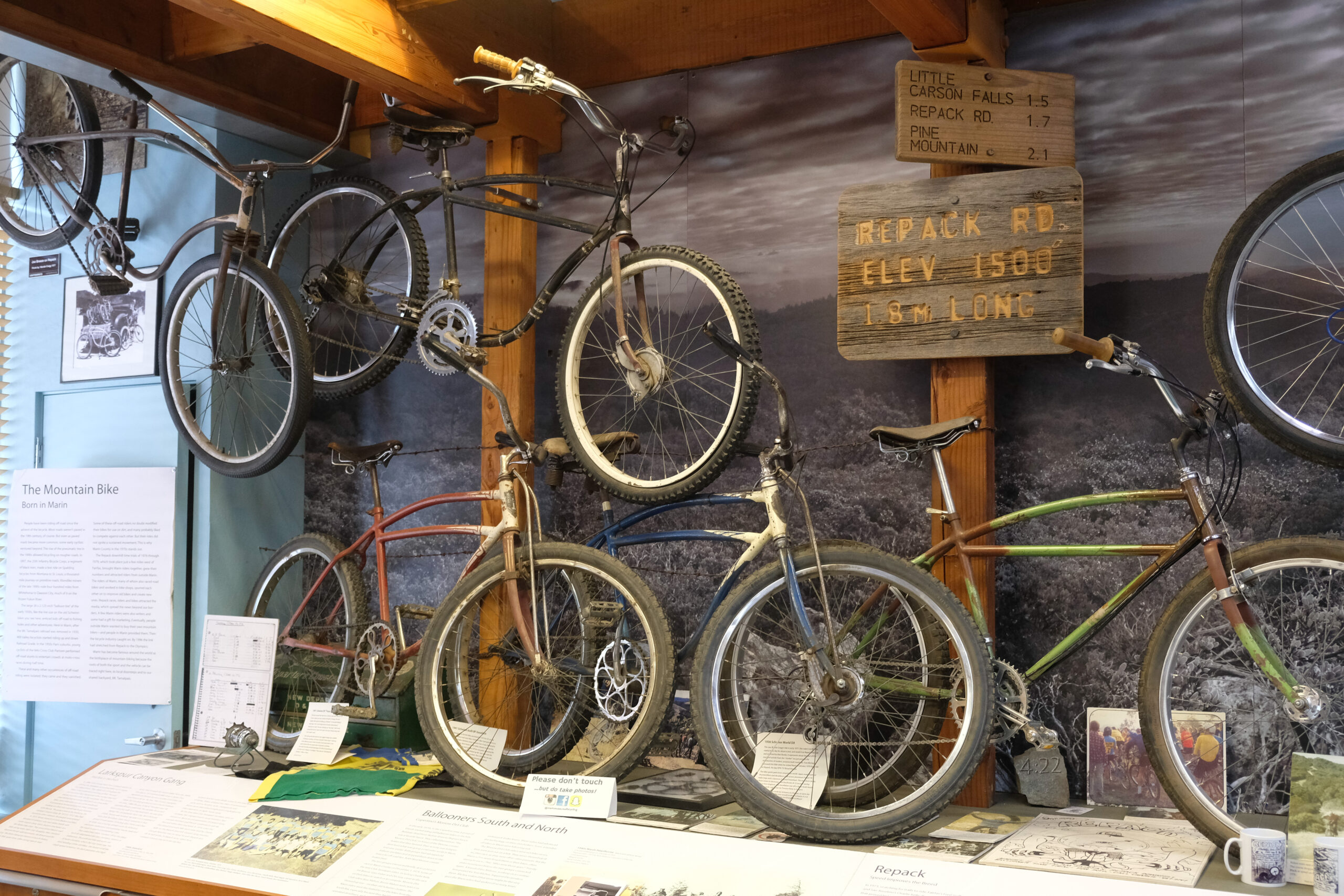
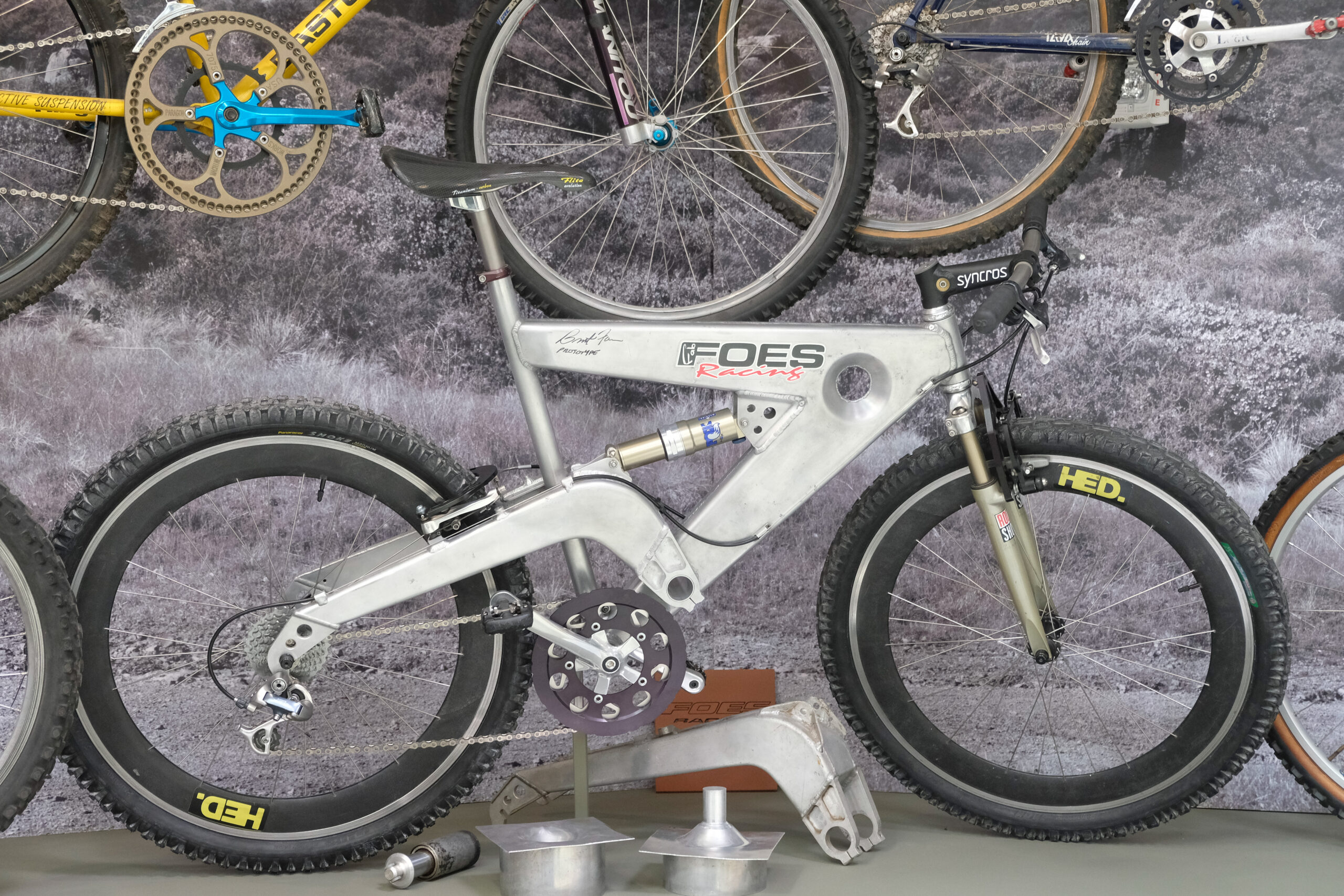
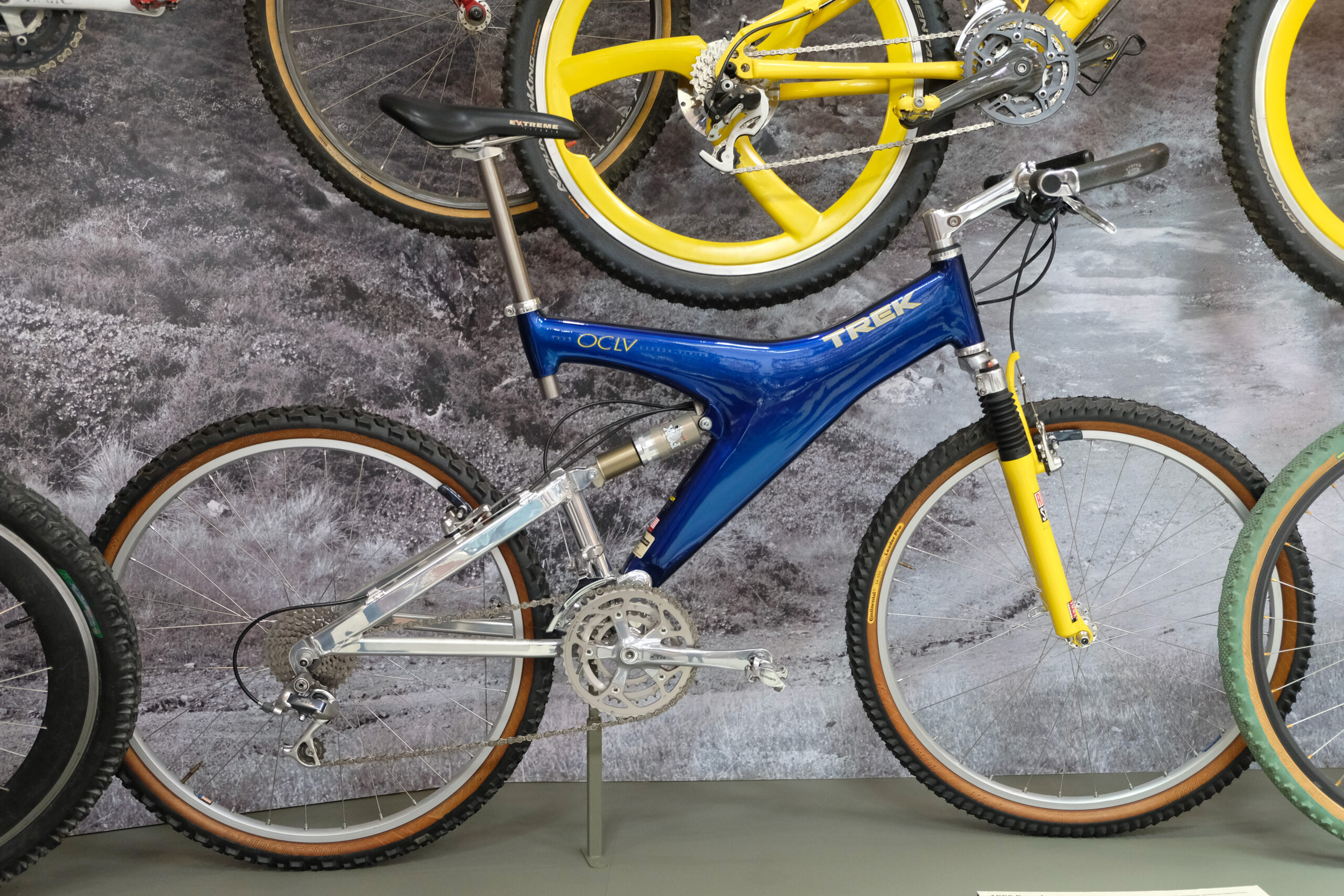
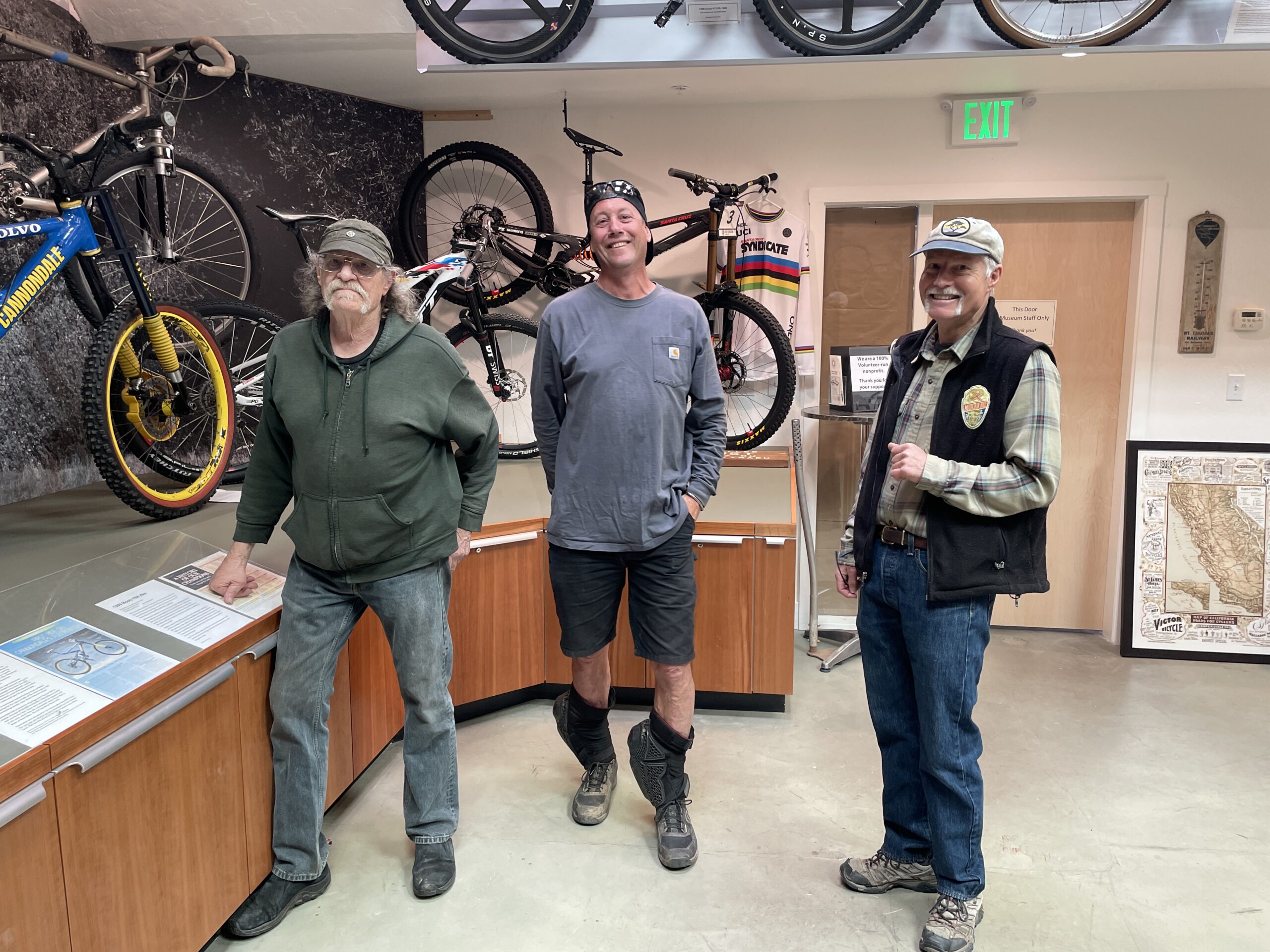
Eventually Kevin and Joe make it across the museum to the ‘modern day’ or thereabouts corner, and Charlie ushers us through a side door. Here is where Charlie keeps his archives. Copies of Fat Tire Flyers, printed race results, photographs from events, clippings of adverts for bikes… shelves and shelves, a whole wall of filing cabinets. It’s not just bike stuff, there’s band stuff in here too, from Charlie’s days as a roadie for the Sons of Champlin. Some of this collection has been rounded up into his book Fat Tire Flyer: Repack and the Birth of Mountain Biking, but needless to say you can only fit so many bits of paper into a book.
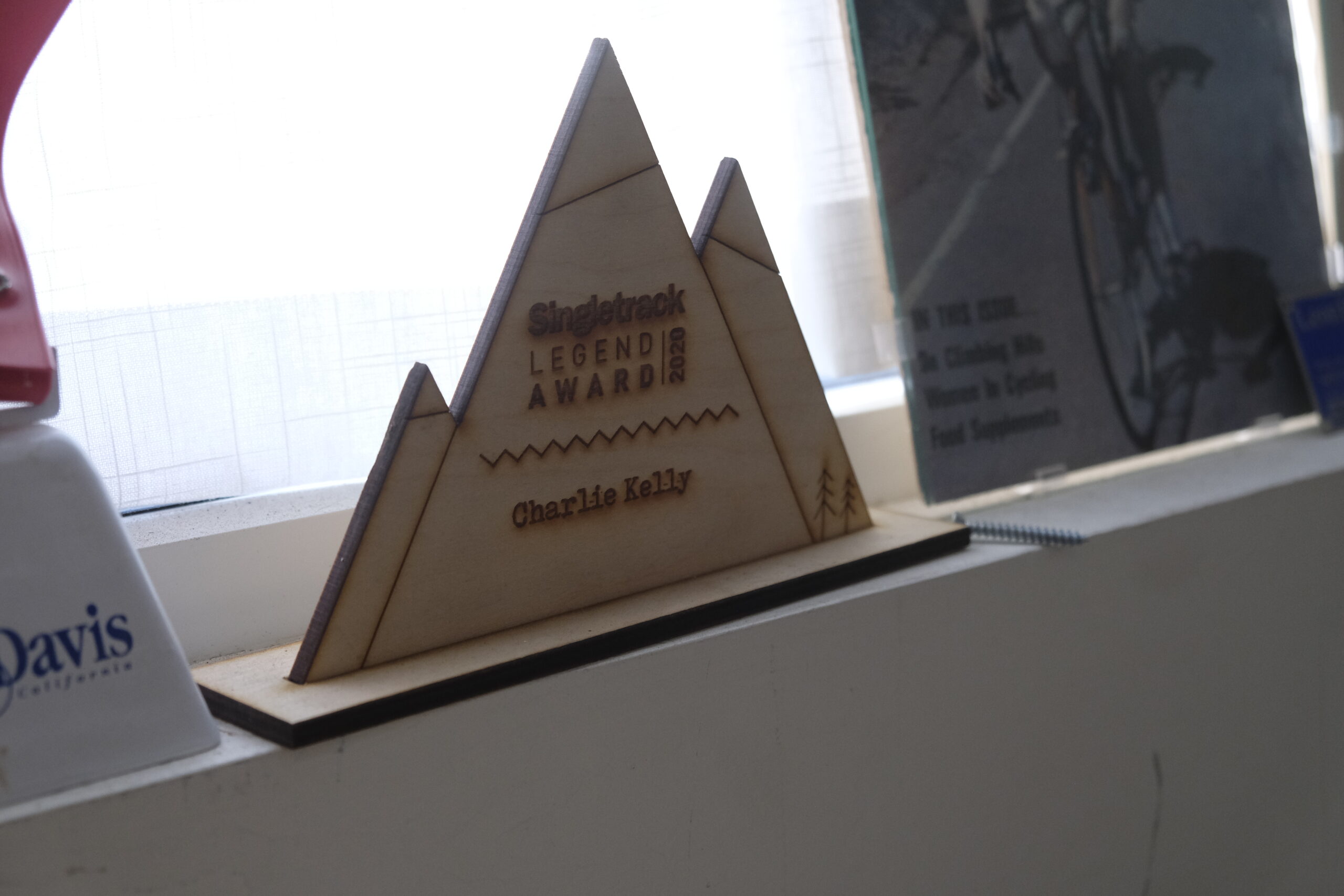
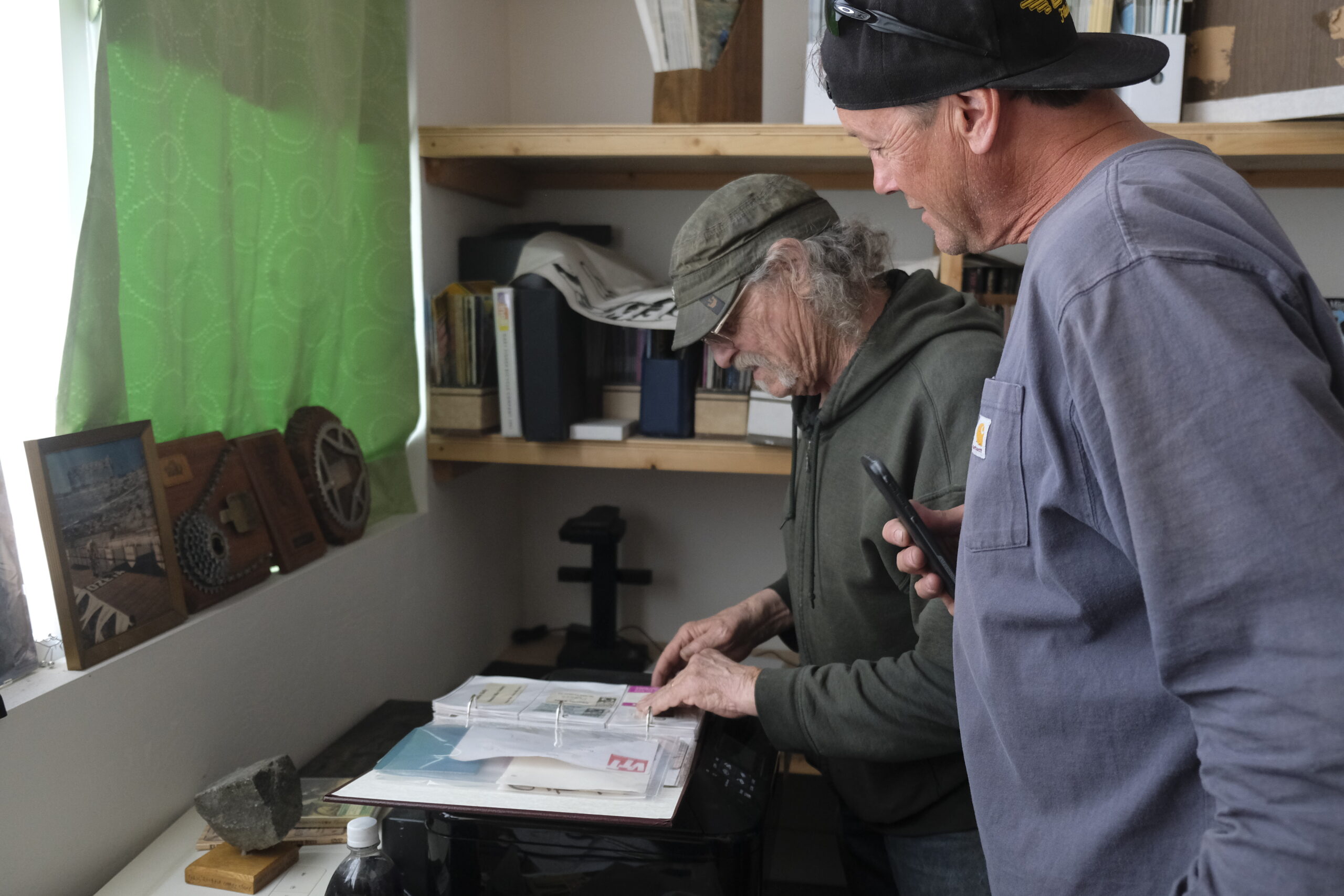
Charlie hopes one day to find another way to open this treasure trove to the world, probably through digitisation. For now, it’s in this room, along with his Singletrack Legend award and other miscellaneous items from his rich and storied life. As an appreciative audience, we’re blessed with being given some actual original copies of Fat Tire Flyers to take home with us. Our tour of the museum is over, but our experience is not.
Scary Kitten
Jacquie Phelan, another Hall of Famer, appears to accompany us to the next phase of our day: a trip to another local bar. She apologises for being late, but she’d found some prime loot (fresh turmeric and celery, now stowed in her panniers) in the health food store dumpster, so she reckons it was worth it. Joe and the rest of the museum dwellers wish us a cheerful goodbye, leaving Charlie, Jacquie, and Joe’s son, Tommy, to head to the bar – a locals spot with bike racks inside the bar. We promise Charlie that we will not stay too long, or drink too much, as Charlie’s wife, Mary, is at home preparing a dinner for the four of us.
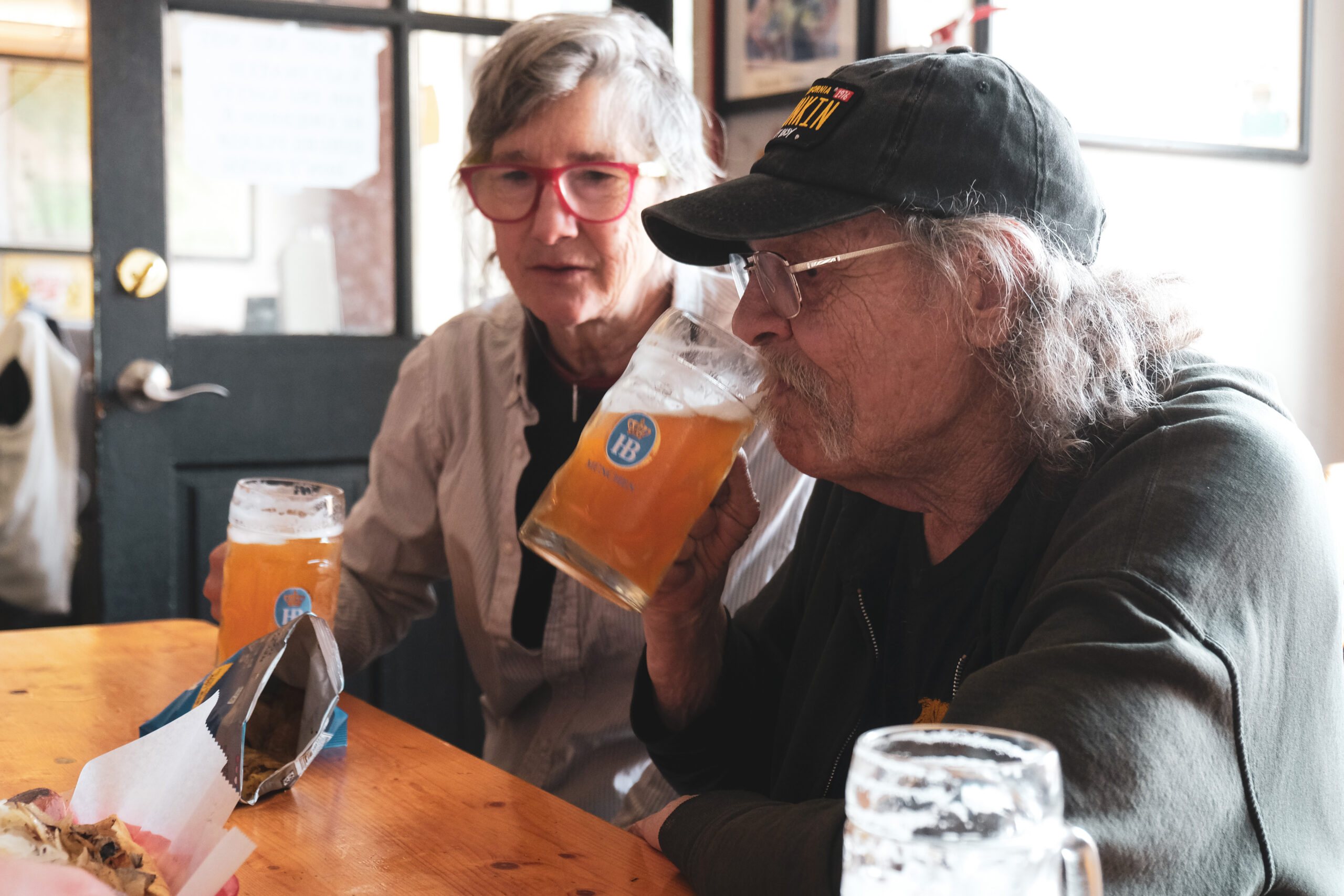
It quickly becomes apparent that this promise may be hard to keep. Jacquie apparently talks everyone at the table into buying her beers. It’s less of a delicate art of persuasion and goes more along the direct lines of ‘your glass is empty, you’ll be going to the bar to refill it, while you’re there, I’d like one too’. This seems inevitably to lead to the purchase of more beer. We try to offset the alcohol with crisps, attempting to walk the line between arriving at Charlie’s house drunk, and arriving too full to enjoy Mary’s meal. A passing parade of locals makes linear conversation tricky, and snippets of stories are started, then interrupted as greetings are exchanged, and explanations are given as to who us visitors are and what we’ve all been doing. In between repeated brief summaries, Kevin and I start to feel like we’re becoming uprooted from reality. Was it really only a few hours ago that we were riding Repack, the site of the first downhill mountain bike races, with Charlie Kelly, the organiser of those races? And then, did Joe Breeze, creator of those first Breezer klunkers specially designed for riding off road, give us a personal tour of an incredible collection of bicycle history? We’re pretty sure that was all real, though it all seems so improbable that we start to wonder what was in those brownies.
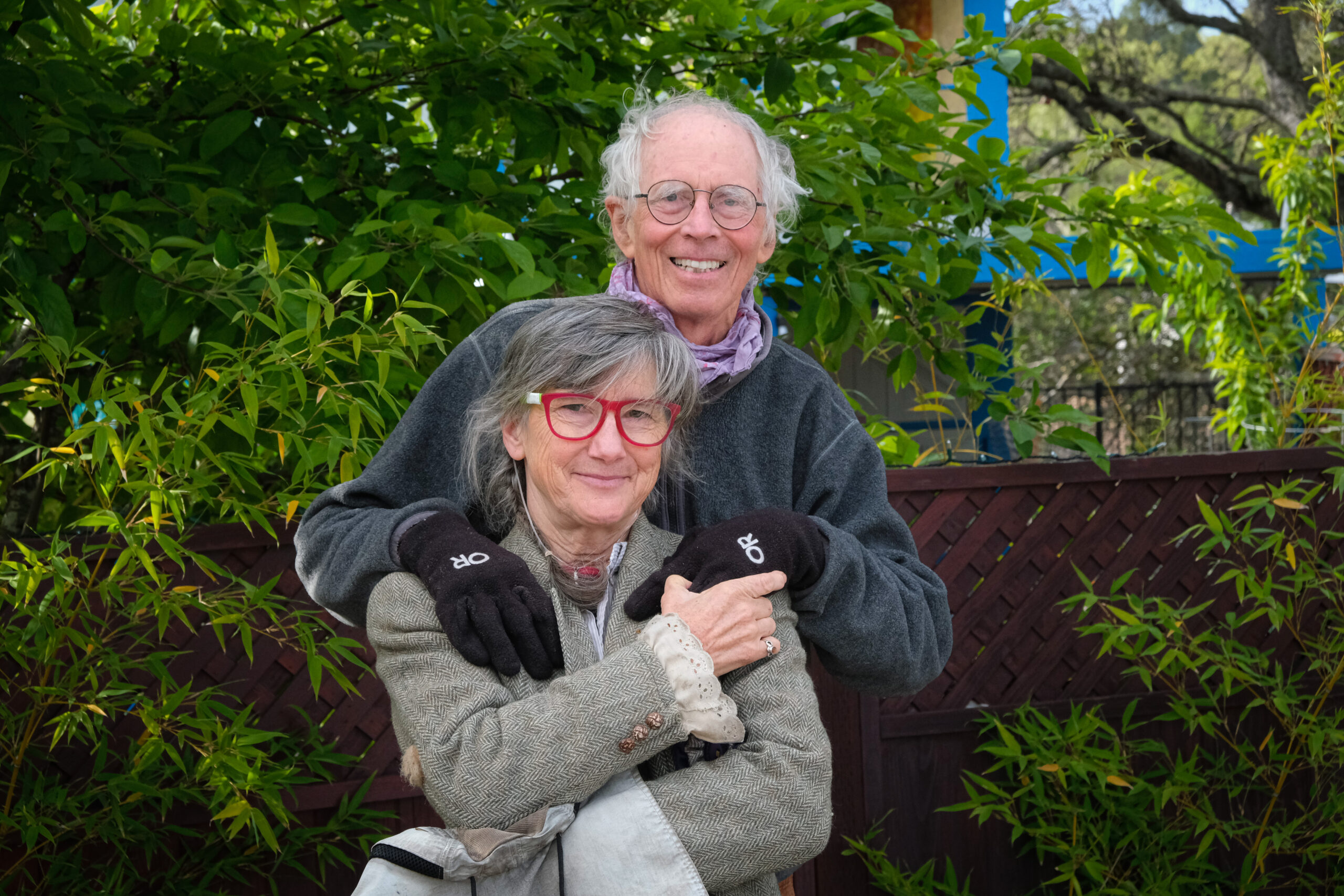
The disorientation and disbelief is almost complete as Charlie Cunningham enters the bar. You have him to thank for welded aluminium bikes, plus a host of other technologies that earned him his place in the Mountain Bike Hall of Fame. Everyone is delighted to have this second Charlie join us, a feat facilitated by Tommy. Jacquie and Charlie C have been married for many years, but since Charlie sustained a brain injury their dynamic has shifted and Jacquie has become a carer as well as a wife. For someone clearly free-spirited and strong-willed, this can’t have been easy. Throughout the day, any mention there has been of Jacquie has been accompanied by a note of respect for how well she is caring for Charlie. Indeed, the presence of Charlie C seems to soften Jacquie’s blunter edges. As she talks to me I fear I’ll be commanded to perform some task or other and that I will meekly agree, yet as she turns to Charlie she seems to transform into something altogether softer. I hesitate to dare to compare Jacquie to a kitten, but as she snuggles into Charlie that’s what she reminds me of.
Cap in hand
Charlie C’s limited energy for such lively gatherings, Charlie K’s eagerness to make it home on time for dinner, and Tommy’s keenness to show us his hat sewing workshop give us the impetus to leave the bar. It is not without some relief that we head out into the fresh air of late afternoon. Tommy, apparently one of those Very Nice Humans, is gently ushering people along, reassuring everyone that he can take Charlie C back home, that he won’t keep us so long that Charlie K gets in trouble, and so on. But we’re definitely not leaving without choosing one of his caps – each has a badge designed by him. He caught something of a lucky break when Lady Gaga was spotted wearing one of his designs. I can’t imagine that me wearing one will do much for his sales, so it’s very sweet to hear that Charlie K and Tommy are great friends, and Charlie has told Tommy enough about me that I have earned a cap.
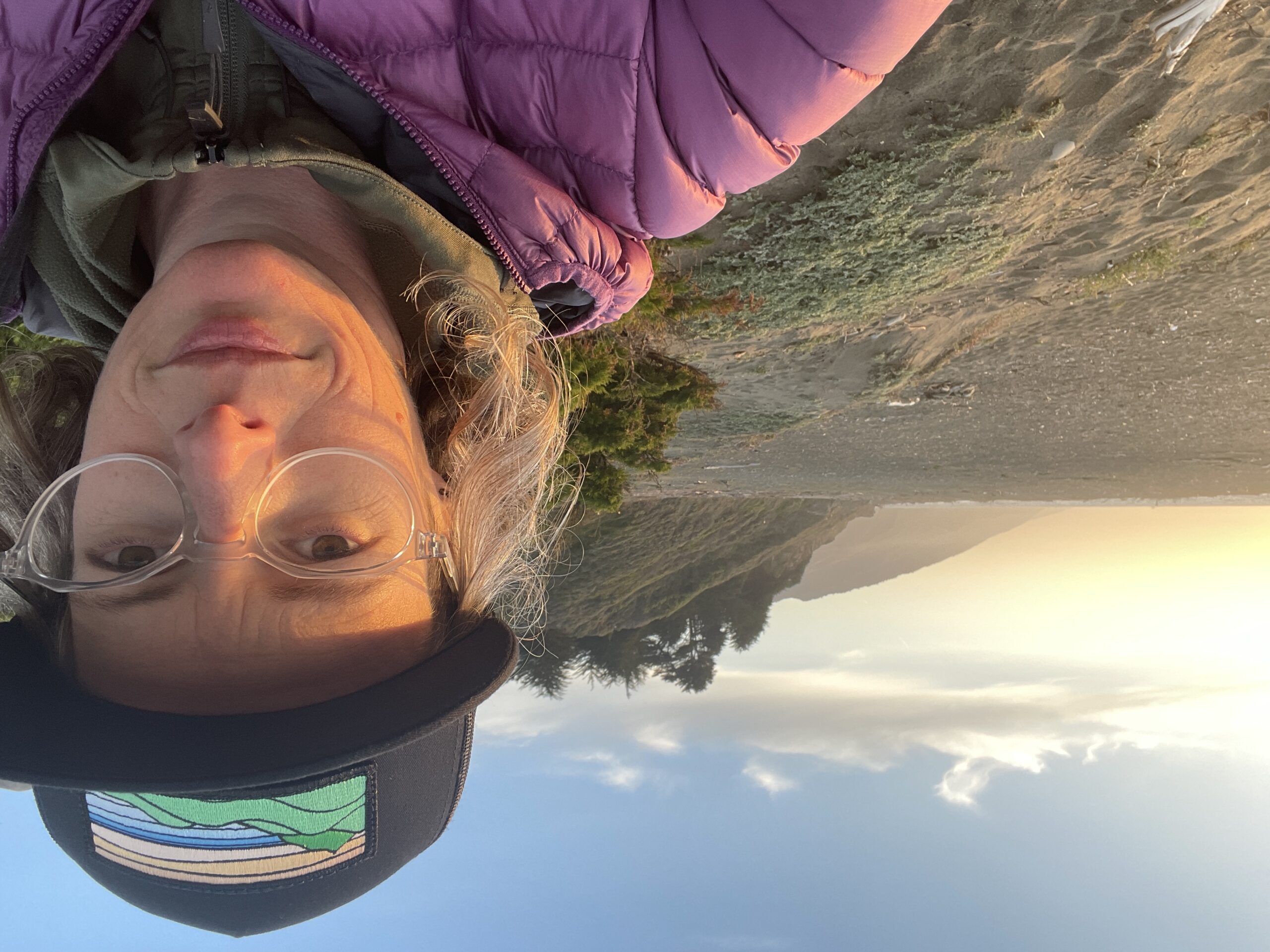
A little more cat herding, a chase of an actual dog that has escaped from the sewing shop, and we bid our goodbyes. Mary’s dinner awaits. We’re going to actual Charlie Kelly’s actual house for actual dinner. This is so completely weirdly, out there, yet so totally normal that it’s hard to process. The house is a home, not some homage to bicycle days. It’s notable for Mary’s talent for sewing, and eye for fabrics and glassware. Perhaps it’s all part of a cunning plan on Mary’s part to keep all Charlie’s collections safely stashed in the museum to leave more room for her fabrics, but there’s barely a trace of bikes around. We eat a delicious dinner that comes with so many different components and serving bowls that in hindsight I feel guilty for not doing the washing up. There is salmon in parchment parcels, potatoes, salads, appetisers, crackers, dessert. But unlike the day’s barrage of bike history, we take this at a slower pace, shifting gears and talking lives beyond bikes. Kids, politics, music, hobbies… the stuff of normal daily lives lived the world over.
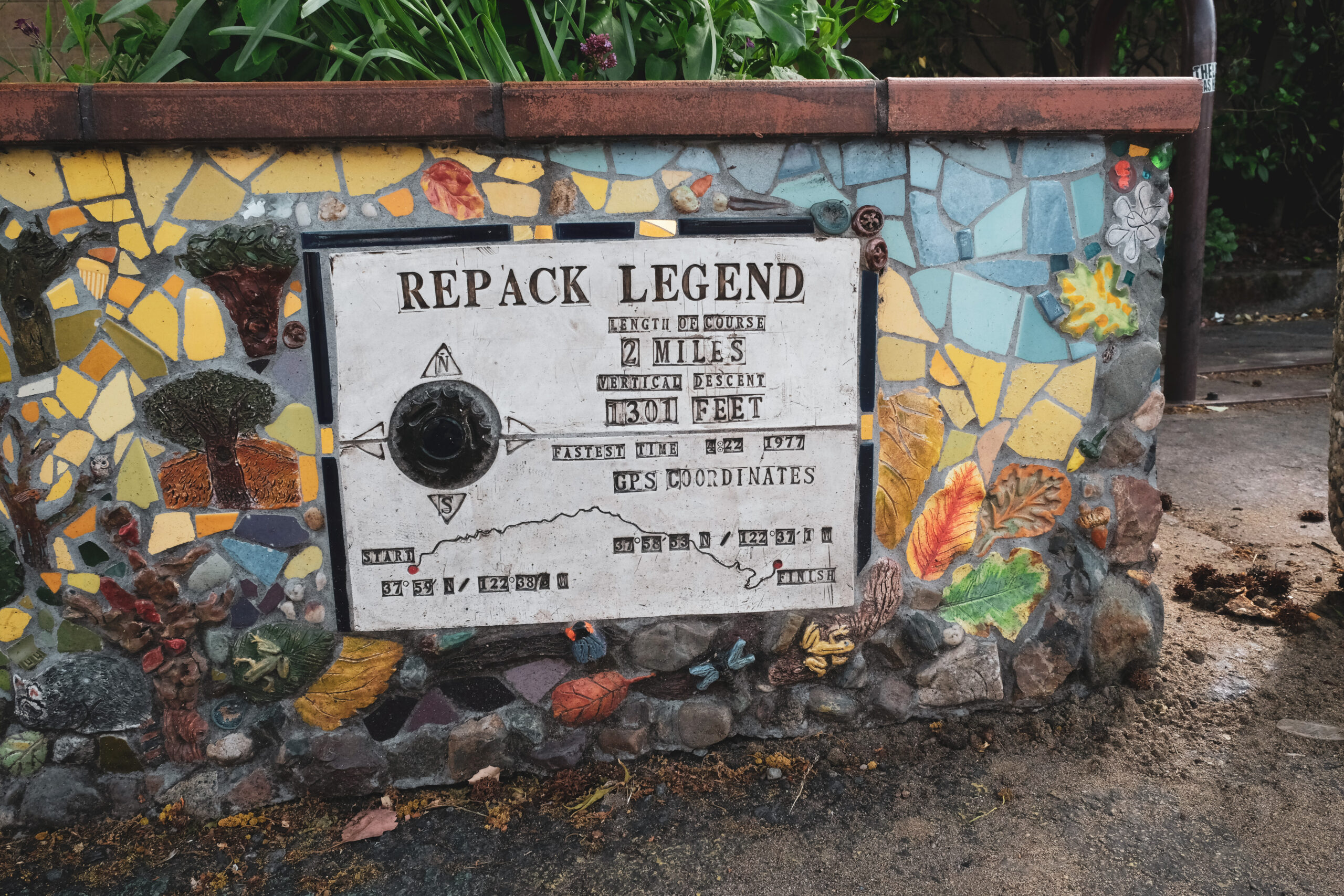
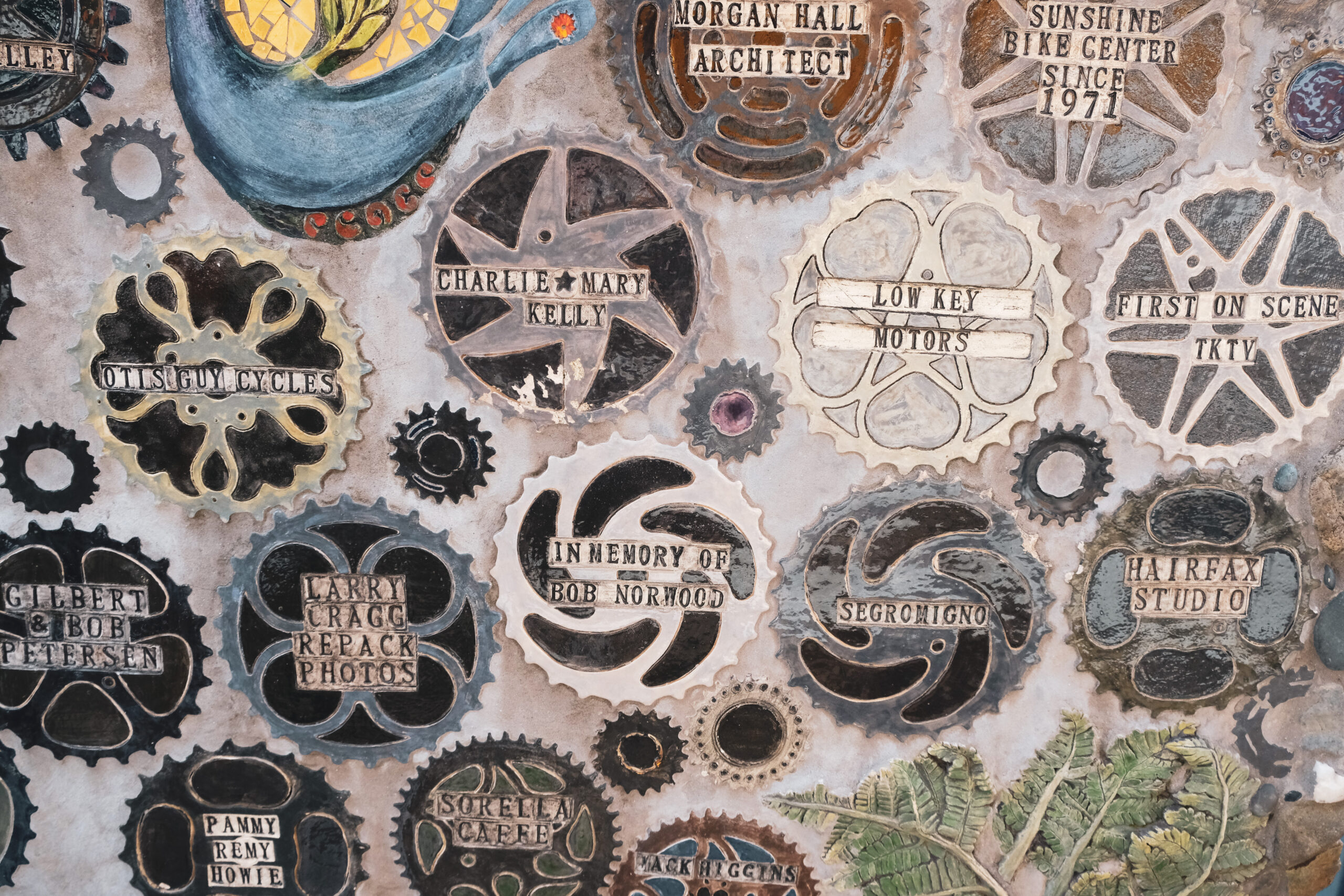
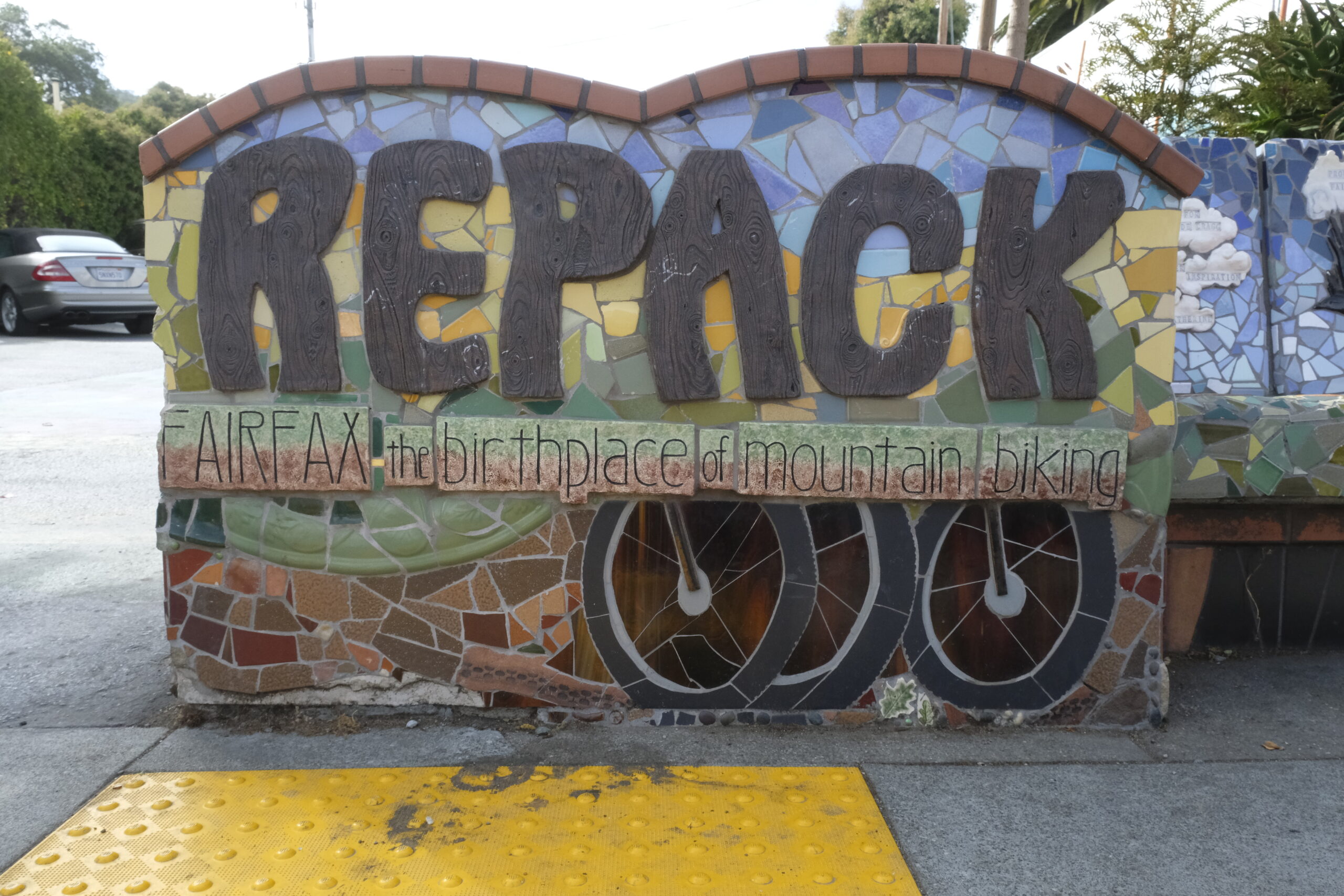
And that’s the thing, I think, if there is a ‘thing’ in this whole crazy whirlwind of a day. Mountain biking was started here, not by gods, but by a community of people who enjoyed what they were doing. They enjoyed riding bikes in the mountains. They enjoyed each other’s company. They looked for ways to make that enjoyment even better, and in doing so gave birth to an activity that took root and branched off into all the many facets of mountain biking that we know today. Nearly fifty years later, they’re still enjoying each other’s company, they still enjoy riding bikes, and they’re still living out their lives in relative normality in this little corner of California. Some of them have been lucky enough to turn their enjoyment into careers, and maybe even fairly lucrative ones. But none of them set out with the goal of ‘creating tangible assets’ or ‘leveraging maximum yield’, or whatever it is that business graduates do. They created a mountain bike community that they wanted to be part of, and some tools that would make it all the more fun.
Bike technology and trails these days may have moved on far beyond those klunkers racing Repack, but I think the ethos of this community of pioneers remains relevant. Is it fun, are we enjoying it? For as long as the answer is yes, we’re still doing it right.






